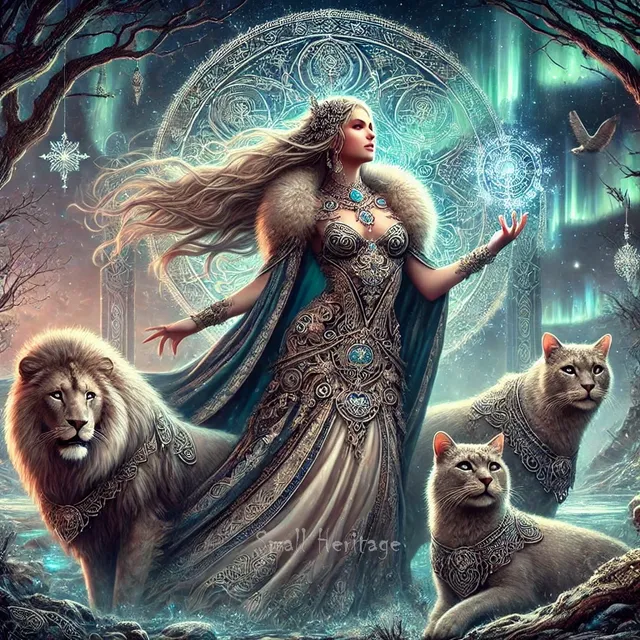Freya, the mesmerizing Norse goddess of war, love, and magic, is one of the most captivating figures in Viking mythology. Known for her beauty and formidable powers, Freya commands respect and admiration both on the battlefield and in the halls of the gods. But who is Freya really, and why does she continue to fascinate us even today?
Who is Freya? The Goddess of War and Love
Freya, often depicted as a powerful yet compassionate figure, is one of the principal deities in Norse mythology. She belongs to the Vanir tribe of gods but lives with the Aesir as a token of peace after the Aesir-Vanir War. Freya is the goddess of love, beauty, fertility, and war. Her dual nature makes her a complex figure—one who can inspire both fear and admiration.
Her most famous possession is the Brísingamen necklace, a symbol of her allure and the source of many legends. Freya is also known for her chariot, which is drawn by two large cats, and for her feathered cloak that allows her to transform into a falcon.
Freya’s Role in Norse Mythology
Freya plays a vital role in Norse mythology. She is the leader of the Valkyries, the chooser of the slain who bring warriors to Valhalla. However, half of the warriors chosen in battle are taken to her hall, Fólkvangr, where they prepare for the end-times battle of Ragnarök.
Freya’s influence extends beyond war and death. She is also a goddess of fertility, and many prayers for a good harvest or safe childbirth are directed to her. Her tears are said to turn into gold, symbolizing her sorrow and the preciousness of life.
The Myths and Legends Surrounding Freya
Freya is at the center of many fascinating Norse myths. One well-known story involves the theft of her beloved necklace, Brísingamen, by the trickster god Loki. In another, she lends her feathered cloak to Loki, allowing him to transform into a bird to rescue the god Idun from the clutches of giants.
Another popular myth is her search for her missing husband, Óðr. She weeps tears of red gold as she travels far and wide to find him, embodying both the pain and resilience of love.
Freya’s Symbolism and Influence in Viking Culture
Freya is more than just a mythological figure; she represents the complex nature of femininity and power. Her association with both life and death, beauty and battle, made her a revered deity among the Vikings. She symbolizes the strength and resilience found in both love and war.
Today, Freya’s legacy lives on in popular culture and jewelry inspired by her image. The motifs associated with her—such as cats, the Brísingamen necklace, and the Valknut—are still cherished symbols of strength and beauty.
Discover Viking Jewelry Inspired by Freya
For those who feel a connection to Freya’s story and the powerful symbolism of Viking mythology, wearing Viking-inspired jewelry can be a meaningful way to honor this rich heritage. Discover beautifully crafted pieces inspired by Norse mythology, including Mjölnir pendants, Valknut symbols, and intricate knotwork designs in our Viking Jewelry Collection.
Conclusion
Freya, the goddess of war, love, and magic, continues to captivate us with her dual nature and compelling stories. Whether you admire her for her strength, her beauty, or her resilience, there’s no denying that Freya’s legacy is as powerful today as it was in the days of the Vikings. Share your favorite Freya myth or what she means to you in the comments below!
